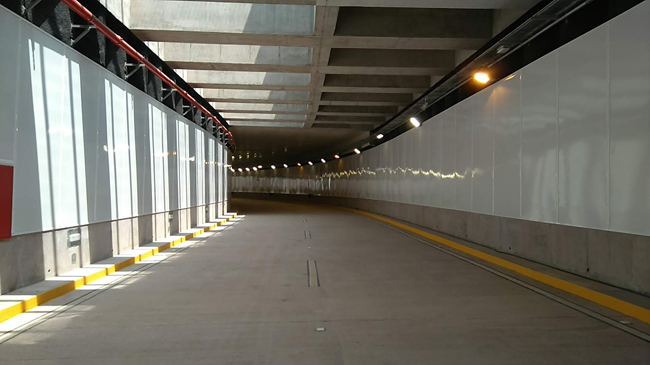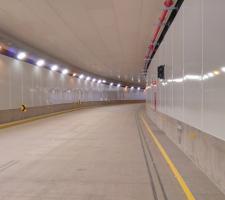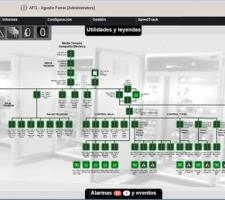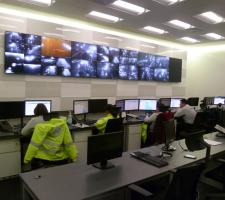
On the Pan-American Highway, the lengthy series of roads which spans both American continents - from the US state of Alaska to the Latin American country of Argentina - ITS solutions are many and varied. One of these, in Peru’s capital, has helped to smooth out a notorious pinchpoint - going underground to solve the problem.
The Benavides Tunnel in the Lima metropolitan area is now said to be the most modern piece of road infrastructure in Peru. Situated beneath the Panamericana Sur (or southern Pan-American Highway), the tunnel is 580m long and stands to benefit more than one million residents of the districts of Surco, San Juan de Miraflores, Villa María del Triunfo and Villa El Salvador. It helps to smooth the passage of 15,000 vehicles every day around Lima.
Huge delays
Previously, the Santa María bridge was the exit route from the Panamericana Sur to Avenue Salvador Allende, which links Villa El Salvador and Villa María del Triunfo. For commuters, crossing the bridge generated huge delays and congestion due to intersections with other roads and the traffic light chaos which ensued, especially at rush hour.
Now drivers can connect directly to the Panamericana Sur through the tunnel, and with the installation of an ITS solution, it is - as well as being the longest tunnel in the Lima region – considered both the most modern, and the safest, in Peru. A minimum free height of 5.25m rises up to 6.25m at the highest point, and there is a horizontal free width of 9m – which is enough for two lanes to allow the easy flow of vehicles, plus sidewalks.
Just building the tunnel to ease congestion was obviously not enough: different studies pointed out that to avoid creating new problems it was essential to comply with road safety requirements. Given the high volume of traffic through the tunnel, it was vital that any ITS solution would allow permanent monitoring of what is happening underground, with automatic detection of critical faults, fires, control of lighting, notifications to users through panels and loudspeakers, access control to the tunnel, and so on.
For this reason the transportation authorities of the city of Lima opted for Spanish company
Incident detection
The new security system allows detection of any incident on the road, the company says, which means it can be solved quickly. This same flow of information also means the exact daily, weekly and monthly patterns of vehicles that pass through this section of the road can be established, along with other data such as what type of vehicle they are.
This is very important to ensure the information given to drivers on variable messaging panels - with the aim of preventing traffic snarl-ups during critical hours – is as accurate as possible. So far, the 100 SOS posts installed in the tunnel have also fulfilled their function in many cases - in the event of accidents or mechanical problems to the vehicles - allowing motorists in difficulty to ask for quick evacuation and therefore avoid queues building up behind stricken vehicles.
“In this sense, the ITS improves traffic, because it minimises the negative effect of incidents,” said Agustín Ferrer, Tecsidel’s project manager.
The supervision of the system is composed of the following modules: management of control equipment, alarm management, supervision and video surveillance of the tunnel, incident/accident and maintenance parts management, management of rules associated with alarms and management of action plans.
Security cameras are connected with the networks of Peru’s national police, which ensures permanent surveillance - both to prevent and intervene in case of traffic accidents.
Back-up devices
Regarding the lighting systems inside the tunnel, back-up devices were installed as insurance in case of emergency and evacuation. The type of devices included those for fire protection, automatic detection and extinction, traffic management equipment, security installations, monitoring and control of emergency power via CCTV cameras, DAI, public address system, signalling, control of lighting, environmental sensors, fibre optic communications network and redundant VLANs in addition to complementary infrastructure such as access control and radio.
The monitoring centre has a view of all the elements and works with web technology in real time, automating the process of data acquisition, screen representation and incident management, whether these are reported by the tunnel team or by highway concessionaire staff.
• Presentation layer includes the full view of the tunnel, indicating the position of equipment through icons, animations and color codes that express their status in real time.
• Logical layer - the core of the system - consists of a series of applications and processes that are responsible for the processing of data obtained by peripheral systems. It is also responsible for generating reports from the generated database.
• Access layer to the devices, which includes the necessary implementation of the communication protocols with those devices.
At the same time, the system contemplates the exchange of information with systems external to the ITS, such as the toll system and maintenance management in general.
The exchange of information with external systems to the motorway concessionaire - as the government entity that requires traffic data to be sent periodically - generates important information flow which allows other road infrastructure works to be programmed and implemented in the short and medium term.














